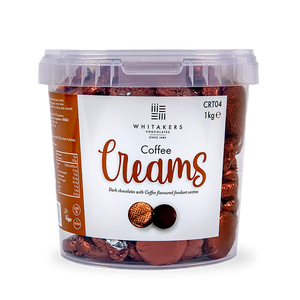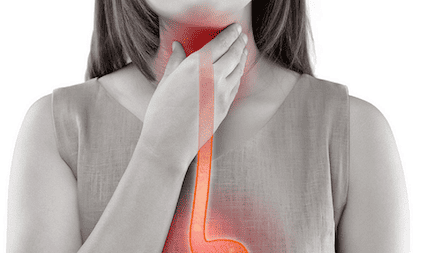For many of us, a nibble of a rich chocolate bar or a sip from a warm cup of cocoa represents nothing short of indulgent pleasure.
But what if that familiar sweet solace is interrupted by an unexpected sensation – a burning in the throat?
While it might sound unusual, it's a phenomenon some chocolate lovers have faced.
Let's find out why...
Why Does Chocolate Burn Your Throat?
Some people experience an unexpected burning sensation in the throat after consuming chocolate, a phenomenon that can be attributed to various reasons.
Acid reflux is a common cause.
Chocolate’s theobromine content relaxes the lower oesophageal sphincter, allowing stomach acid to move up, causing burning, particularly for those with sensitive oesophagi or prone to acid reflux.
Some individuals may have mild allergic reactions to chocolate ingredients such as milk, nuts, or soy, which can cause inflammation and a burning or itching sensation in the throat.
Chocolate's caffeine can irritate the throats of those sensitive to it.
As a histamine liberator, chocolate can cause excess histamine release, leading to symptoms like burning throat or itching.
Some chocolates contain artificial additives that might also cause irritation, and unexpected spiciness in gourmet chocolates can cause burning.
Let's look at each of these in more detail:
-
Acid Reflux: One common culprit is acid reflux or gastroesophageal reflux disease (GERD). Chocolate contains theobromine, a compound that can relax the lower oesophageal sphincter, allowing stomach acid to return to the oesophagus. This can cause a burning sensation, particularly if you're prone to acid reflux or have a sensitive oesophagus.
-
Allergic Reactions: While genuine chocolate allergies are rare, some individuals are allergic or sensitive to ingredients commonly found in chocolate products, like milk, nuts, or soy. A mild allergic reaction can result in inflammation of the throat, leading to a burning or itching sensation.
-
Caffeine Sensitivity: Chocolate, especially dark variants, contains caffeine. Those sensitive to caffeine might experience symptoms like an irritated throat or increased acid production, leading to a burning sensation.
-
Histamine Response: Chocolate is a known histamine liberator, which can cause your body to release histamine, a chemical involved in allergic reactions. Excess histamine can lead to symptoms like a burning throat, itching, or even hives.
-
Artificial Additives: Some chocolates, notably cheaper or mass-produced variants, might contain artificial additives, preservatives, or flavour enhancers. For those sensitive to these additives, consuming such chocolates can cause irritation in the throat.
-
Spiciness: It might sound odd, but some gourmet chocolates now incorporate spicy ingredients like chilli. If you're not expecting it, the heat from such additions can take you by surprise and cause a burning sensation.
If you regularly experience a burning sensation after consuming chocolate, it's essential to note the specific products that cause this reaction and check their ingredient list.
It might be beneficial to seek medical advice or undergo allergy testing to rule out underlying conditions or sensitivities.

What Are Methylxanthine Compounds in Some Chocolate?
Methylxanthines are a group of naturally occurring compounds that we often consume in various everyday beverages and foods, with chocolate being a notable source.
For those indulging in a bar of chocolate or two in the UK, it's worth understanding these compounds and their role in our beloved treat.
-
Theobromine: The primary methylxanthine found in chocolate, theobromine is especially abundant in cacao beans. Its name originates from the cacao tree's botanical name, Theobroma cacao, where "Theobroma" translates to "food of the gods". Theobromine is primarily responsible for the bitter taste of dark chocolate. While it shares structural similarities with caffeine, its stimulant effects on the central nervous system are much milder. However, it can relax the smooth muscles of the bronchi in the lungs, potentially acting as a bronchodilator.
-
Caffeine: While more commonly associated with coffee and tea, chocolate does contain modest amounts of caffeine, especially in darker varieties. Caffeine is a well-known stimulant affecting the central nervous system and can contribute to the alertness or wakefulness experienced after consuming certain foods or beverages.
-
Theophylline: This compound is found in smaller amounts in cacao beans than theobromine and caffeine. Theophylline is another bronchodilator, and while its presence in chocolate is not high enough to have a therapeutic effect, it's worth noting.
Why are Methylxanthines Important in Chocolate?
Beyond flavour, these compounds can influence how chocolate affects our mood and body.
The combination of theobromine and caffeine can offer a gentle stimulant effect, potentially enhancing mood, alertness, or energy levels for some individuals.
However, it's crucial to remember that sensitivity to these compounds varies among individuals.
While most people can enjoy chocolate without any adverse effects, some might experience symptoms like restlessness or insomnia if consumed in large amounts or close to bedtime.

How Do Methylxanthine Compounds in Chocolate Cause Sore Throats? l
It's thought that the methylxanthine compounds found in chocolate, primarily theobromine and caffeine, might play a role in this phenomenon.
-
Stimulant Effect: Both theobromine and caffeine act as central nervous system stimulants. In some individuals, particularly those sensitive to these compounds, this stimulation might cause a sensation of dryness or tightness in the throat, which can be mistaken for or evolve into a sore throat.
-
Relaxation of the Lower Oesophageal Sphincter: Theobromine, one of the prominent methylxanthines in chocolate, can cause lower oesophageal sphincter (LES) relaxation. The LES is a muscular ring that prevents stomach contents from moving back into the oesophagus. When the LES relaxes, there's a risk of acid reflux, where stomach acid moves up into the oesophagus. This acid can irritate the throat lining, leading to symptoms like soreness or a burning sensation.
-
Increased Acid Production: The stimulant nature of these compounds might also lead to increased stomach acid production in some individuals. As with the point above, this additional acid can exacerbate a sore throat sensation if there's a reflux event.
-
Mild Allergic Response: While it's less about the methylxanthines themselves, it's worth noting that some individuals might have a mild allergic response or sensitivity to the components of chocolate. This can lead to inflammation or irritation in the throat, resulting in soreness.
-
Histamine Release: Chocolate can prompt the release of histamine in some individuals, leading to various symptoms, including throat irritation or soreness.
It's important to state that not everyone will experience a sore throat after consuming chocolate, and many can enjoy it without any adverse reactions.
However, if you consistently find that chocolate causes discomfort, it might be worth monitoring your intake, choosing different chocolate varieties, or consulting a healthcare professional.
While chocolate is a delightful treat for most, being aware of its effects, and more specifically, understanding the role of methylxanthine compounds, can ensure that your chocolate indulgences remain a pleasurable experience.

Related Post: Chocolate Allergy.
How Can You Avoid Getting a Sore Throat When Eating Chocolate?
For many people, the idea of forgoing chocolate is unthinkable, but if you've ever felt a tickle or soreness in your throat after indulging, you might be seeking ways to relish this treat without discomfort.
Thankfully, there are several steps you can take to minimise the chances of a sore throat after your chocolatey indulgence:
-
Moderation is Key: As with many things, moderation can make all the difference. Consuming large quantities of chocolate might increase the chances of experiencing a sore throat. Instead, consider savouring smaller amounts to enjoy the taste without overloading your system.
-
Stay Hydrated: Drinking water alongside your chocolate can help wash down any potential irritants and keep your throat moistened. It can also dilute stomach acid if acid reflux is a concern.
-
Opt for Milk Chocolate: Dark chocolates have higher concentrations of theobromine and caffeine. If you're sensitive to these compounds, you might fare better with milk chocolate, which generally contains lower levels of these methylxanthines.
-
Eating slowly: allowing the chocolate to melt in your mouth can reduce the potential for irritation, ensuring a more even and gradual consumption of the ingredients.
-
Avoid Eating Chocolate on an Empty Stomach: Consuming chocolate when you have some other food in your stomach can help buffer its effects and might reduce the chances of acid reflux.
-
Experiment with Different Brands: Some chocolates, particularly cheaper or mass-produced ones, might contain additives or preservatives that can irritate the throat. Trying different brands and types might help you identify one that doesn't cause discomfort.
-
Limit Other Irritants: If you're pairing chocolate with other potential irritants, like alcohol or spicy foods, consider limiting these combinations. Combining multiple irritants can amplify the risk of a sore throat.
-
Watch for Allergens: Ensure you're not allergic or sensitive to any ingredients in the chocolate. Some people might react to components like dairy, nuts, or soy, often found in chocolate products.
-
Elevate Your Head: If you enjoy chocolate treats close to bedtime, try propping yourself up with an extra pillow. This can reduce the risk of acid reflux, which might be contributing to throat irritation.
-
Consult Your Doctor: If you regularly experience discomfort or soreness after consuming chocolate, it might be worth discussing this with your GP to rule out underlying sensitivities or conditions.
Can Chocolate Cause Heartburn or Acid Reflux?
Chocolate, a delightful treat adored by many in the UK, is not just a sweet indulgence.
For some individuals, it might also be the unexpected culprit behind episodes of heartburn. But how exactly can this sweet pleasure be linked to such discomfort?
-
Relaxation of the Lower Oesophageal Sphincter (LES): At the junction of the oesophagus and stomach lies the LES, a ring of muscle that acts as a valve, ensuring food moves in one direction – down. Chocolate contains theobromine, a compound found in cocoa, which can cause the LES to relax. This relaxation can allow stomach acid to seep back into the oesophagus, leading to that familiar burning sensation of heartburn.
-
Increase in Stomach Acid Production: The caffeine and theobromine found in chocolate can stimulate the stomach to produce more acid. Excessive acid can exacerbate the sensations of heartburn, especially if the LES is not functioning optimally.
-
High Fat Content: Rich, creamy chocolates often have a high-fat content. Fatty foods are known to slow down stomach emptying, which can lead to increased pressure in the stomach. This added pressure can force stomach acid into the oesophagus, causing heartburn.
-
Magnesium: Chocolate also contains magnesium, which, in larger quantities, can lead to diarrhoea. While not directly causing heartburn, diarrhoea can increase the acidity in the stomach, making heartburn more likely.
How Can You Avoid Acid Reflux When Eating Chocolate?
Here are some practical tips to enjoy your treat without triggering reflux:
-
Moderation: One of the simplest ways to avoid acid reflux is to consume chocolate in moderation. Large quantities might overwhelm the digestive system, so savour smaller amounts.
-
Opt for Low-Fat Varieties: Creamy, rich chocolates can have a high-fat content, slowing stomach emptying and exacerbating acid reflux. Low-fat or dark chocolates might reduce the risk.
-
Limit Other Triggers: Pairing chocolate with other reflux triggers, such as coffee or alcoholic drinks, amplifies the risk. Consume them separately if possible.
-
Stay Upright: Resist the temptation to lie down immediately after enjoying your chocolate. Give your digestive system a couple of hours to process.
-
Avoid Chocolate Before Bed: Consuming chocolate late at night, especially close to bedtime, can heighten the risk of acid reflux. The body's digestion slows during sleep, and lying down can make it easier for stomach acid to travel up the oesophagus.
-
Hydrate: Drink water after having chocolate. It can help clear any remnants from the oesophagus and dilute stomach acid.
-
Chew Gum: Chewing sugar-free gum can stimulate saliva production, neutralising and washing away any lingering stomach acid.
-
Mind Your Overall Diet: A balanced diet can help maintain a healthy weight, which reduces the risk of acid reflux. Being overweight puts additional pressure on the stomach, making acid reflux more likely.
-
Consider Antacids: Over-the-counter antacids can neutralise stomach acid for occasional relief. However, they should not be used frequently without consulting a healthcare professional.
-
Seek Medical Advice: If you notice regular or severe bouts of acid reflux after consuming chocolate or other foods, it might be time to consult a GP or gastroenterologist. They can guide your situation and ensure there aren't underlying conditions.
While chocolate is a much-loved treat across the UK, it is important to consume it in a way that ensures enjoyment without discomfort.
By being mindful of your consumption habits and listening to your body, you can indulge without the unwelcome aftermath of acid reflux.
Where Can You Buy Top Quality British Chocolate?
For those with a discerning palate, the quest for top-notch British chocolate might seem a winding journey.
Yet, regarding a harmonious blend of tradition, quality, and ethical values, Whitakers Chocolates emerges as a shining beacon in the chocolate landscape.
We’ve been crafting exquisite chocolates for over 135 years.
That's more than a century of mastering the art and refining the craft!
What adds a heartwarming touch is that this business has been family-run throughout its long history, making it an embodiment of British familial tradition.
Unwavering Commitment to Quality: Synonymous with top-tier chocolates, Whitakers Chocolates has earned its reputation by consistently prioritising quality.
Not only are the finest and most natural ingredients selected, but the company also collaborates with suppliers who echo their ethos and values.
A Chocolate for Every Craving: Whether your heart desires fondant creams, hand-finished luxury truffles, or classic dark chocolate-covered stem ginger, Whitakers Chocolates has got you covered.
From our signature chocolate wafer shards to an array of chocolate bars, they cater to every chocolate fantasy.
Final Notes On Why Chocolate Burns Your Throat
Experiencing a burning sensation in the throat after consuming chocolate can be quite unsettling and detracts from chocolate's enjoyable experience.
This issue can arise for various reasons, such as individual sensitivity to ingredients or underlying medical conditions.
Understanding the specific cause is essential to address the issue appropriately and to continue enjoying chocolate without discomfort.
Awareness and careful consideration of the type and amount of chocolate consumed can help avoid unpleasant experiences and ensure that the rich and luscious treat remains a source of pleasure rather than discomfort.


















